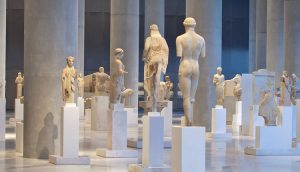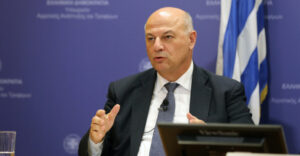The Acropolis Museum has received more than 1.66 million visitors over the past year, with a sharp rise in the number of foreigners visiting its collections, the museum’s curator Prof. Dimitris Pandermalis said in statements on Wednesday, on the ninth anniversary since the museum opened its doors to the public.
“The number of visitors increased significantly last year,” he said, noting that the figures concerned the period between June 2017 and May this year. “Especially important is one change: the English-speakers were roughly the same in number as Greek speakers, in other words around 300,000. The number of Greeks did not diminish but the number of foreigners increased greatly,” Pandermalis explained.
The next largest group were those speaking French, he said, while there was also a sharp jump in the number of Chinese, reflecting the museum’s efforts to establish cooperation with the Shanghai Museum and Beijing’s Forbidden City Museum.
Pandermalis highlighted two important temporary exhibitions that helped boost the numbers visiting the museum, including the “εmotions” exhibition organized with the Onassis Foundation in New York and the exhibition on the Eleusinian Mysteries that will be ending in the coming days. Another major exhibition in the offing, he said, was that planned in collaboration with the Forbidden City Museum in mid-September.
“For the first time, three royal suites will be transferred fully equipped and in their original layout, with everything they contained, to the Acropolis Museum and set up there, so that one can get a glimpse of a glorious period in 18th-century China at the time of the Emperor Qianlong, who was a great leader who combined major reforms and a huge effort to unify the Chinese empire with an artistic approach. He was an artist himself, who painted and wrote poetry – it is said that he wrote more than 10,000 poems – and set up an artistic workshop in his court. He was also a great collector of his country’s artistic work from deepest antiquity up to his own time,” Pandermalis said.
Outlining the museum’s plans for its centenary, he said that two major events were being prepared: the opening of the on-site archaeological excavation at the museum’s foundations to visitors, along with an associated exhibition of finds made there, and an ambitious programme to “go digital”.
Source: thegreekobserver
Ask me anything
Explore related questions





